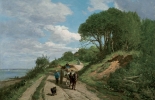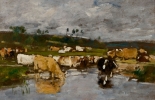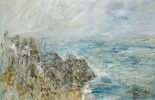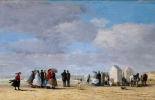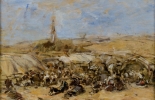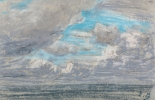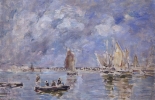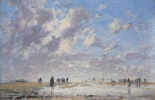Eugène Boudin, l’atelier de la lumière
from April 16 to September 26, 2016
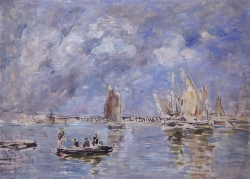
Eugène BOUDIN (1824-1898), Boats and Breakwater, 1890-1897, oil on canvas, 40 x 55 cm. © MuMa Le Havre / Florian Kleinefenn
Boudin continued to produce studies of this kind revolving round several themes. He was less interested in the subject they depicted than how well they captured the atmosphere of a particular moment.
This approach was misunderstood by his contemporaries, who accused him of repeating himself. "I am too busy finishing my studies to bother to copy myself," replied Boudin, adding that each time, he depicted "a quite different effect." However, for a while he himself was to have doubts about the value of this remarkable body of work: "I have too often contented myself with being a hasty improviser: I have spent too much time exploring fleeting effects of the sky and sea." He could not know that he was inventing a way of working that was later to be adopted by the Impressionists. These multiple variations on a subject sowed the seeds of the "series" Monet produced from 1889 onwards. Monet himself, at the end of his life, was to recall that he had been "fascinated by these pochades, daughters of what I call instantaneity."


